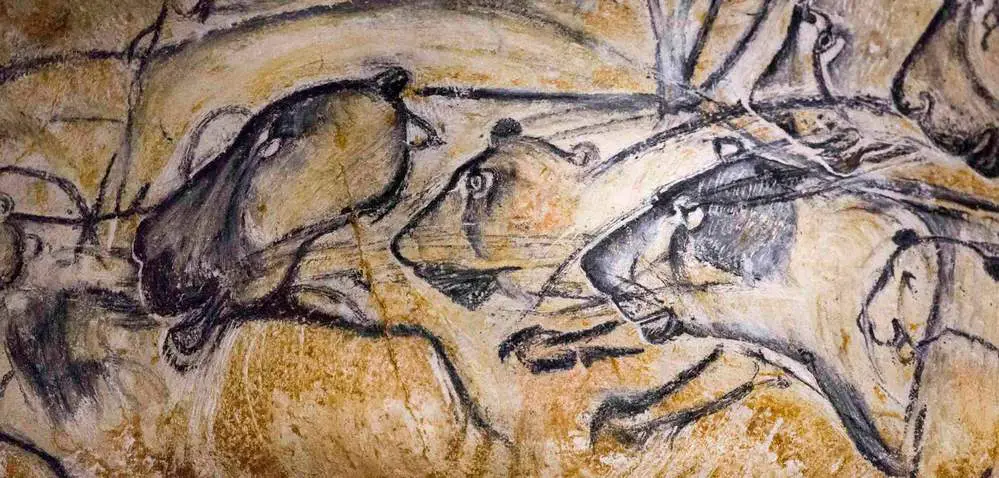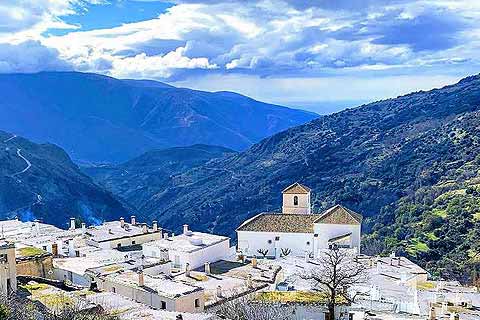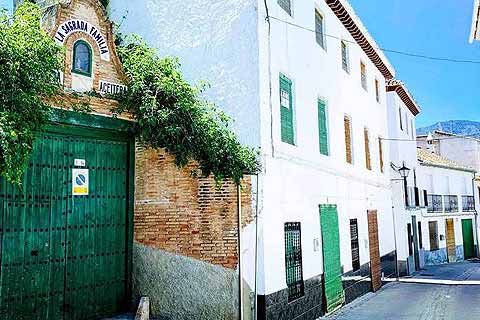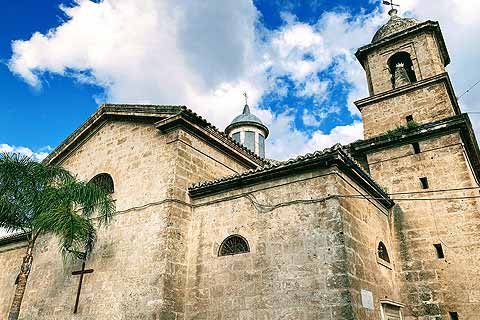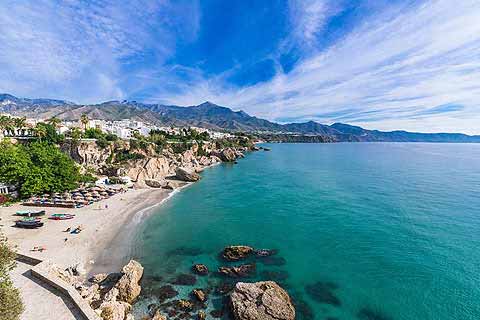Prehistoric History of Almuñécar
It is amazing to think about the number of people and lives that have been affected by this area throughout time. We live in the 21st Century, but life in this area dates back to at least 1 million years ago, our lives represent merely a grain in the overall sands of time.Just to give you an overall understanding of the past up until now we have included the chart below. Historians have categorized prehistory into three different time frames or ages based on the tool making skills of the people at that time. These periods often overlap due to the differing rates in development in certain areas.

- The Stone Age - Period dates from 2.6 million years ago until roughly 3,300 BC
This age has been further broken down into the:
- Paleolithic Period - 2.6 million BC - 10,000 BC - represents about 99% of human existence
During the Paleolithic period humans were basically hunter/gatherers that banned together in small groups for stability and support. This period ranges in human ability from the creation of the first stone made tools (by hominids in Africa) to the development of agriculture near 10,000 BC. Again this Period has been broken down into three more:
- Lower Paleolithic - 2.6 million BC - 120,000 BC
2.6 million years ago was the time period of Homo habilis, an ancestor of modern day humans. Homo habilis lived in Africa and developed the use of basic stone tools called choppers. They were not very advanced so they probably were not able to hunt, only scavenge wild plants and small animals.
1.5 million years ago Homo habilis evolved into the more advanced Homo Erectus. Homo Erectus traveled out of Africa and into Asia, where they mastered the ability to use fire and created more advanced stone tools.
Historians now have evidence that 1 million years ago early humans discovered and lived in Europe. In fact, the oldest pieces of human bone have been found in Spain. Fragments found near Sierra de Atapuerca in 1994 date to 780,000 years ago and were probably ancestors to the late Neanderthals. A one million year old bone from an infant skull, a relative to Homo sapiens, was found in the Granada Provence in 1976. These finds tell us that early man made it onto the European continent much earlier than was once believed.
- Middle Paleolithic - 120,000 BC - 24,000 BC
This period is most well-known as being the era during which the Neanderthals lived. They nursed their elderly and practiced ritual burial indicating an organized society.
A skull found in 1848 near the Straits of Gibraltar is now known as "Gibraltar Woman" and has been dated to 50,000 years ago.
- Upper Paleolithic - 24,000 BC - 10,000 BC
This is the period when the first cave paintings were created. One of the most well known is in Altamira, Spain (near Santander) which dates to 14,000 to 12,000 BC. Early cave paintings usually did not depict human beings but animals instead such as bison and horses. The Altamira cave is special in that sketches of the human hand in charcoal have been found. Altamira has been decreed a World Heritage Site. Other cave paintings have been found all over Europe (mostly in France and Spain), the Nerja Caves, a ten minute drive from Almuñecar, host cave drawings as well as prehistoric human remains.
- Mesolithic Period - 10,000 BC - 4,000 BC
This period signifies the end of the last ice age. The Human population at this time decreased in number and reverted back to a more hunter/gatherer lifestyle due to the climate change and food shortages. Only half as many Mesolithic sites have been found than in the previous time periods.
The first human battle is recorded in the Mesolithic period, which took place in modern day Egypt. This aggression has been attributed to the lack of food and failure of early agricultural attempts.
- Neolithic Period - 4,000 BC - 3,300 BC
The Neolithic, New Stone Age, was characterized by the adoption of agriculture, the development of pottery and more complex, larger settlements. Generally characterized as being between 4,000 BC - 3,300 BC, the first Neolithic cultures started around 7000 BC in the fertile crescent (the eastern mediterranean and Mesopotamia). This new culture spread throughout the Mediterranean, the Indus valley, China and Southeast Asia.
- Paleolithic Period - 2.6 million BC - 10,000 BC - represents about 99% of human existence


** Neanderthal family in Ice Age Europe & Bronze Age Dolmen
- The Bronze Age - 3,300 BC - 1,200 BC
This period varies in its starting date - In Mesopotamia, the Bronze Age begins at about 2900 BC, in Ancient Egypt, it begins in 3150 BC, Europe dates to 3000-600 BC.
The Bronze Age represents the period in which a more advanced metal working society is begun. Characteristically, bronze (a smelting of copper and tin) is widely used in the formation of tools and other artifacts. The domestication of the horse is another important advancement.
The Phoenician culture spread across the Mediterranean during this period from 1550 BC to 300 BC. They were among the first to settle Almuñecar in around 1,500 BC.
- The Iron Age - 1200 BC - 400 AD (in Europe) - date varies depending on region
The final period in the three age system is the Iron Age, it is the period in which the main tool making ingredient was iron. This period does not have any solid starting or ending date due to the varying levels of development in different regions. Major changes in artistic styles, religious beliefs and agricultural advancements often coincide with the beginning of the iron age in any specific region.
Iron working was introduced to Europe around 1000 BC, probably from Asia Minor and slowly spread northwards and westwards over the succeeding 500 years. The prominent societies during the Iron Age, in Europe and the Mediterranean, where the Greeks, Romans and the Celts.
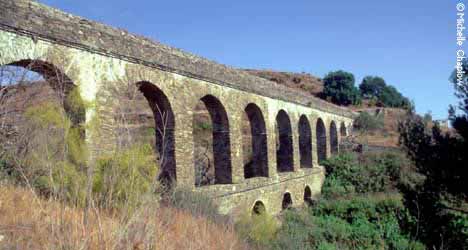
A Roman Aqueduct in Almuñecar, Spain.
Save money on your next trip with our favorite travel websites!
| Find the Cheapest Hotels: | |
| The Largest Selection of Villas & Apartments: | |
| Cheapest, Most Reliable Car Rentals: | |
| Best Bus & Train Fares: | |
| Huge Selection of the BEST Tours & Activities | |
| Discount Tickets to Museums & Attractions | |
